#Best Backend for React
Explore tagged Tumblr posts
Text
Flutter Developers For Hire
Looking to hire skilled Flutter developers? Regumsoft Technologies offers top-tier Flutter Developers For Hire, ensuring your projects are handled by experts. Our developers specialize in creating high-performance, cross-platform mobile applications that meet your business needs. Whether you're launching a new app or optimizing an existing one, our team delivers quality solutions with efficient, clean code. Regumsoft Technologies is dedicated to providing a seamless experience, offering developers who are not only highly skilled but also aligned with your project goals. Choose Regumsoft Technologies for reliable and professional Flutter development services.
0 notes
Text

Hi, Hello! It’s me, Izzy and I am back from a very long break!
For those who don’t know who I am and just saw my post, I’m Isabelle but Izzy for short (and even shorter, Izi)! I run a Codeblr blog which I post about anything coding! I try to strictly only talk about coding, programming and computer science, but frankly, I ramble on about something else eventually! Hope you’re doing well!
Now, I know I said I wouldn't come back, but that was because I suddenly became stuck on what to post about and wanted to give myself a break and figure out how to do things on my blog and my online presence in general!
So, in summary, I am back from my break very inspired and eager to help more people get into programming / get better at programming! I will go on to talk about exactly what I have been doing during my break later on in this post, but wanted to say thank you to everyone who messaged me throughout the months and saw how I was! Very thought and extra blessings from God to you, please!

Working at my new-but-not-so-new job!
Yes! So, obviously, as a 21st Century girlie, I am working! Still at the music company that I started back in January! Now that I am 8 months into the job, I feel now I am fully immersed in the job and the projects and not feeling like an outsider! I went on multiple out-the-office events with the whole company and it was nice! Some I couldn’t attend because of religious reasons, but I still had fun! I got to meet a lot more girlies at my office that I don’t usually talk to (because I’m still the only girl in the frontend engineering team but there is a backend girlie but we don’t work close together so… distance)! Cheatingly, I am always ticking the box of “code every day”! However, work has made me do more UI/UX designing + frontend programming websites which I love! Always wanted to be both and not just one or the other! We are allowed to have 2 job titles, remember? (But make sure the salary is in accordance, of course, ~)

Learning new technologies! (for fun, obviously)
By “for fun” I mean personal reasons, the technologies I learnt on a whim were not for work but because I needed to learn them for personal projects I wanted to learn! I stress again; it’s more fun to learn something because you want to and not because you have to! So, I have been learning how to create desktop applications using ElectronJS and ReactJS (React has become my best friend!). Me now compared to me when I started my break is 10x smarter I feel like! My brain has definitely expanded somewhere…!

Latest project?!
Inspired by study productivity apps and wanting to track my Korean language progress, I am making a desktop application called ‘eStudySpace’! It would be my own personal app, but I want to see if I can actually pull something like this off! Right now I have not coded anything because I want to work on the design aspect first (which is smarter and a time saver in the future), so I have been on Figma for the last 2 weeks coming up with designs!
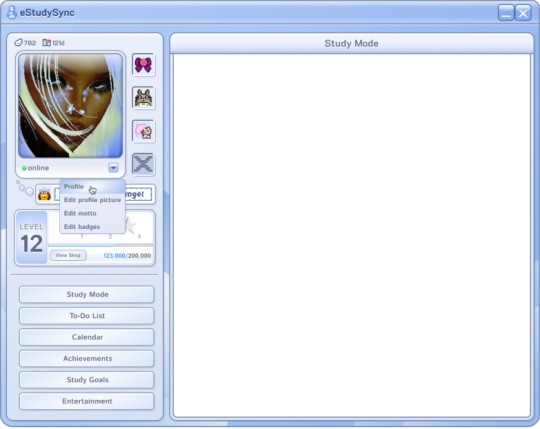
(It looks bad, I know this is like idea no.3287368 ugh...)

Miscs
I have been learning Korean for 4 months now.
I have plans to move to a South-Eastern country, The Philippines? Singapore? Unsure!
I do have plans to switch to a new career but that’s more like 5 years into the future! But right now, I’m happy where I am at!
118 notes
·
View notes
Text
What is Mern stack And Its importance? Before that I will Tell you the best institute for Mern stack course in Chandigarh.

What is Mern stack?
MERN Stack is a popular JavaScript-based technology stack used for building full-stack web applications. It consists of four key technologies:
MongoDB: A NoSQL database that stores data in a flexible, JSON-like format.
Express.js: A lightweight and fast backend framework for Node.js.
React.js: A front-end JavaScript library for building user interfaces.
Node.js: A runtime environment that allows JavaScript to run on the server side.
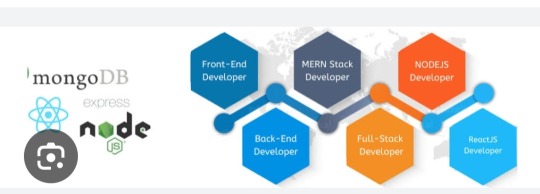
Importance of Mern Stack :
Full-Stack JavaScript – Uses JavaScript for frontend and backend, simplifying development.
High Performance – Node.js ensures fast, scalable applications.
Cost-Effective – Open-source, reducing development costs.
Rapid Development – React’s reusable components speed up UI building.
Flexibility – Suitable for web apps, SPAs, eCommerce, and real-time applications.
Scalability – MongoDB handles large data efficiently.
Strong Community Support – Large developer base ensures continuous updates and support.
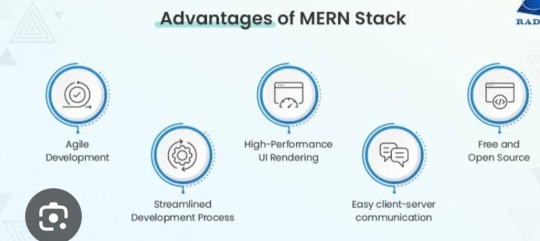
Now i will tell you the best institute for Mern stack course in Chandigarh .
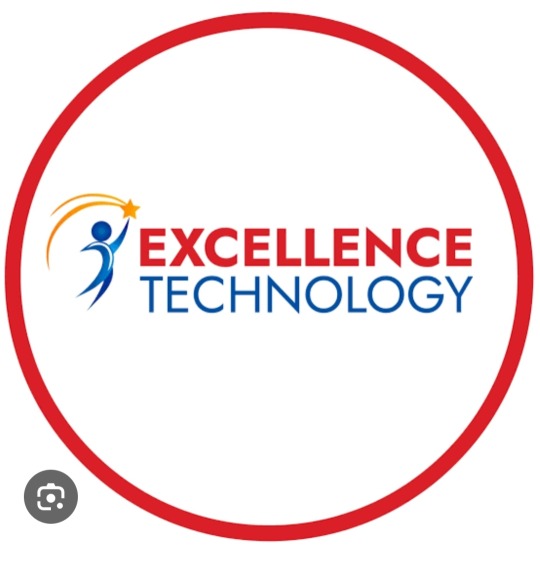
Excellence Technology is a leading EdTech (Educational technology) company dedicated to empowering individuals with cutting -edge IT skills and bridging the gap between education and industry demands. Specializing in IT training ,carrer development, and placement assistance ,the company equipts learners with the technical expertise and practical experience needed to thrive in today's competitive tech landscape. We provide IT courses like python ,Full stack Development, Web Design ,Graphic Design and Digital Marketing.
Contact Us for more details: 93177-88822
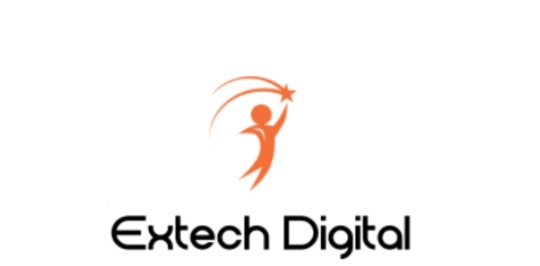
Extech Digital is a leading software development company dedicated to empowering individuals with cutting -edge IT skills and bridging the gap between education and industry demands. Specializing in IT training ,carrer development, and placement assistance ,the company equipt learners with the technical expertise and practical experience needed to thrive in today's competitive tech landscape. e provide IT courses like Python ,Full stack Development, Web Design ,Graphic Design and Digital Marketing.
Contact Us for more details: 93177-88822

Excellence academy is a leading software development company dedicated to empowering individual with cutting edge IT skills and bridging the gap between education and industry demands.specializing in IT training, career development, and placement assistance, the company equits learners with the technical expertise and practical experience needed to thrive in today's landscape. We provide IT courses like python, full stack development,Web design, and Digital marketing.
Contact Us for more details: 93177-88822
About Author
Nikita Thakur
Mern stack AI Developer/ 2+ years of experience
Excellence technology
Professional summary
Nikita thakur is a skilled MERN Stack AI Developer with over 2 years of experience at Excellence Technology. Proficient in MongoDB, Express.js, React.js, and Node.js, she integrates AI solutions to build scalable, high-performance web applications. Nikita excels in developing innovative solutions, enhancing user experiences, and driving business growth through technology.
2 notes
·
View notes
Text
Ship Mobile Fast
Ship your AI apps in days, not weeks.
Save weeks of development time with our React Native Expo Boilerplate. In App Purchases, Open AI, Anthropic, Replicate, Fal AI, GlueStack, AI Proxy Backend, Firebase, Supabase, Admob, and more.
Ship Mobile Fast AI Wrapper is Live!🔥
For those who want to build AI applications…
Now, you can create the apps you envision in just 1-2 days.😎
Integrations with OpenAI, Anthropic, Replicate, and Fal AI. Protect your API keys from being stolen with AI Proxy Backend.
*
Pro (Best for Casual Apps):
In App Purchases (RevenueCat) Google Mobile Ads Authentication Flow Onboarding Flow Push Notifications Multi Language Support Error Tracking App/User Analytics Lifetime Updates Private Discord Channel Access Supabase⚡️ GlueStack Version StyleSheet Version
*
AI Wrapper (Best for AI Projects):
In App Purchases (RevenueCat) Google Mobile Ads Authentication Flow Onboarding Flow Push Notifications Multi Language Support Error Tracking App/User Analytics Lifetime Updates Private Discord Channel Access Firebase🔥 AI Proxy Backend (API Keys Secured🔒) Open AI & Anthropic Replicate AI & Fal AI Ready-to-Use AI Templates
*
Ship Mobile Fast: https://shipmobilefast.com/?aff=1nLNm
Telegram: ahmetmertugrul
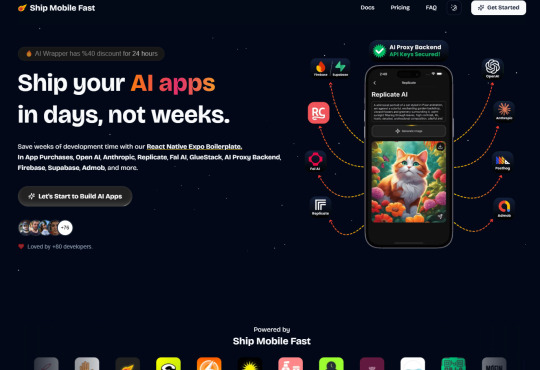
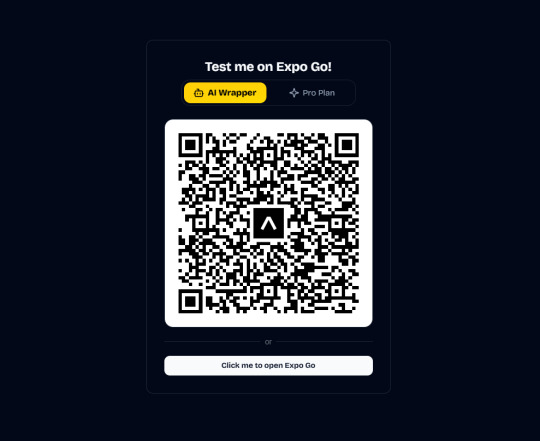
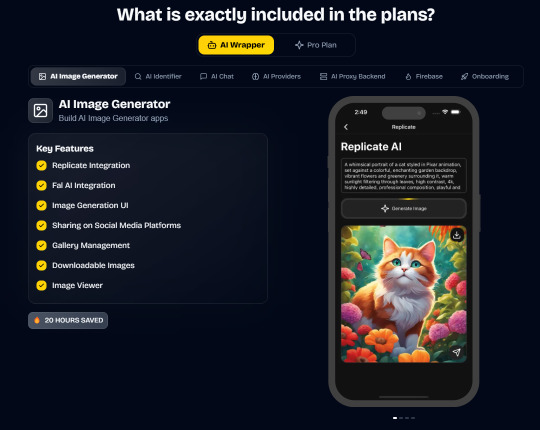
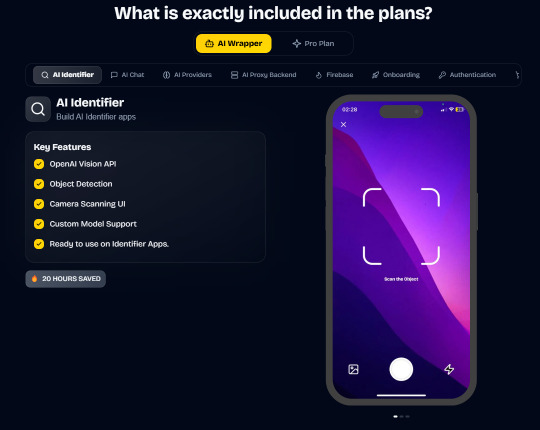
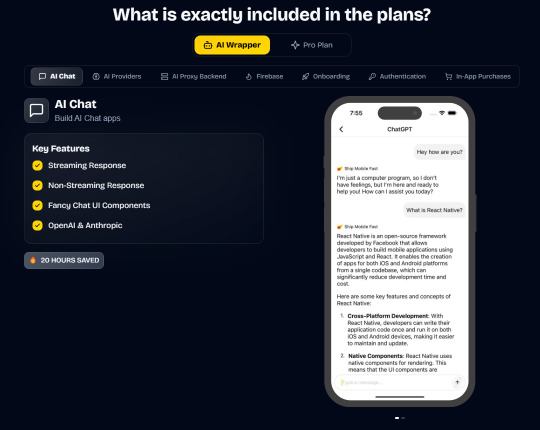
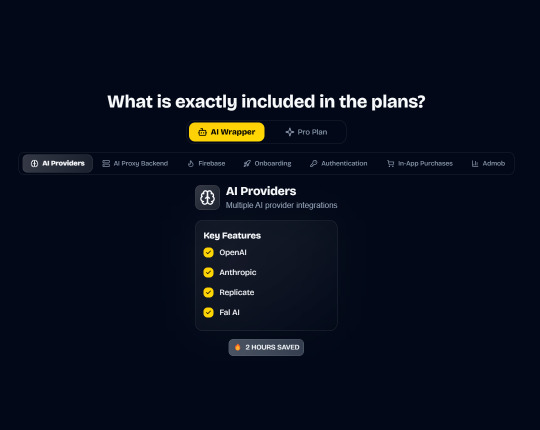
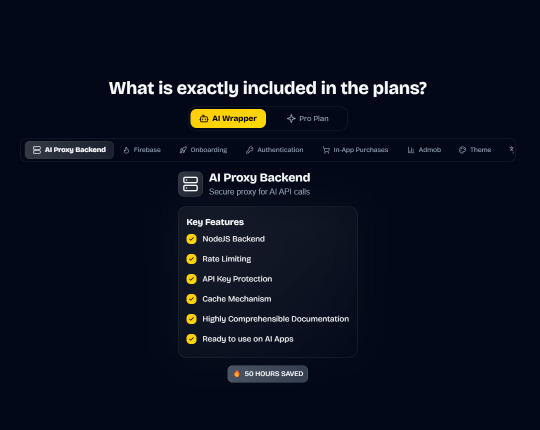
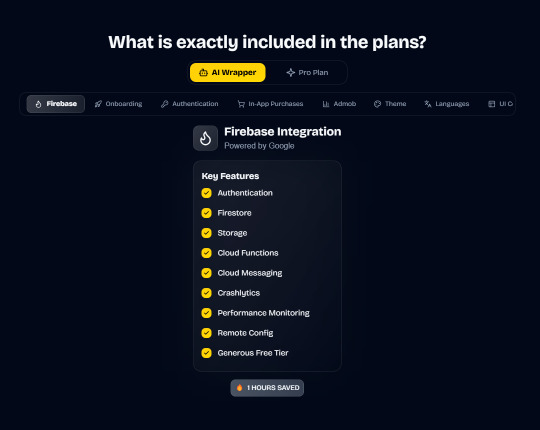
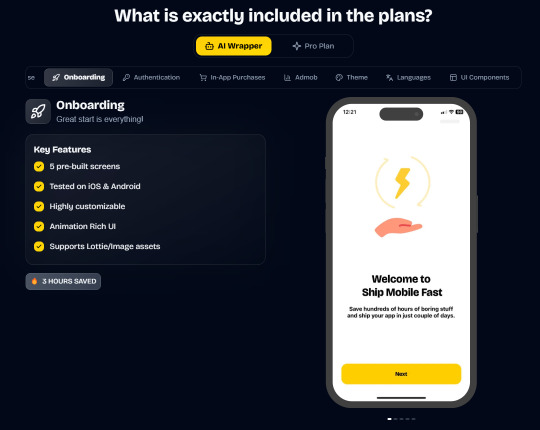


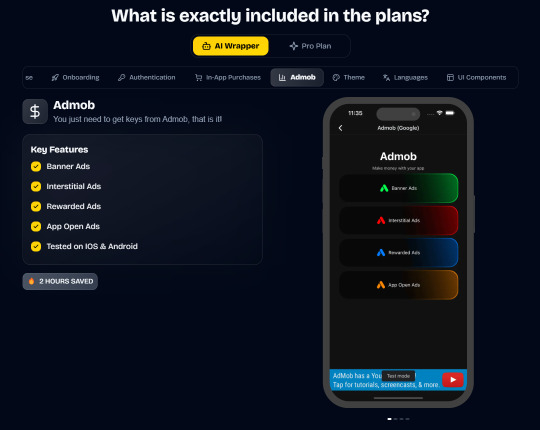
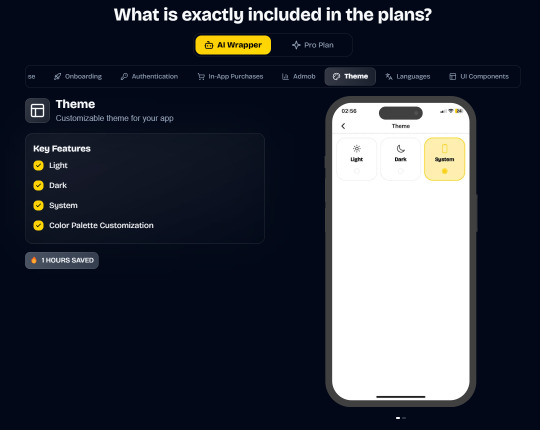
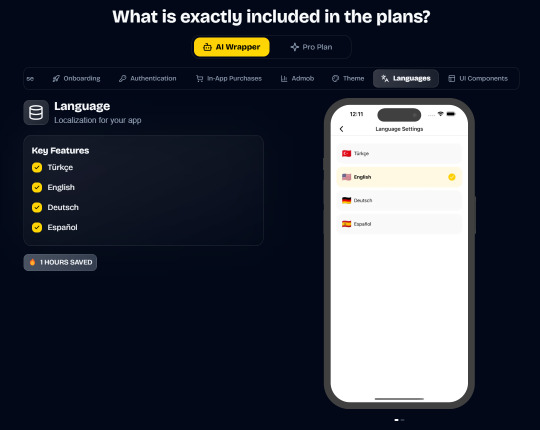
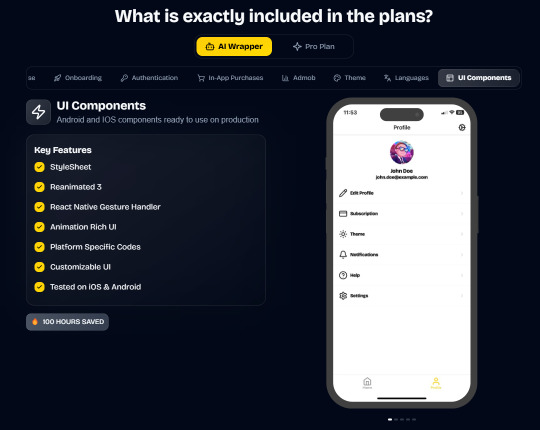
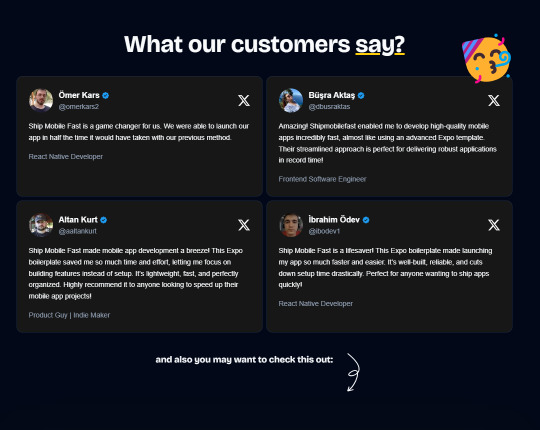
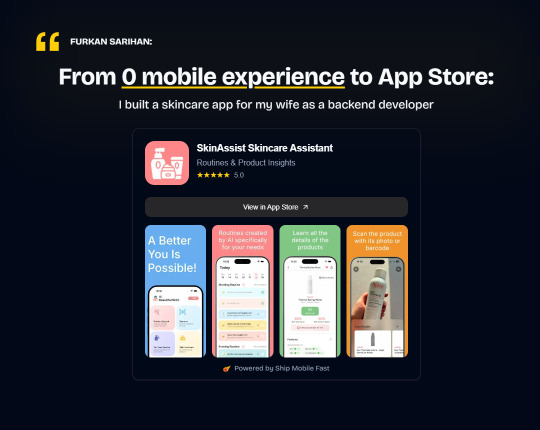
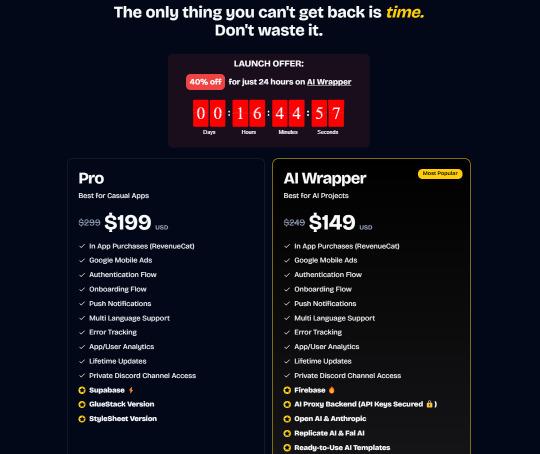
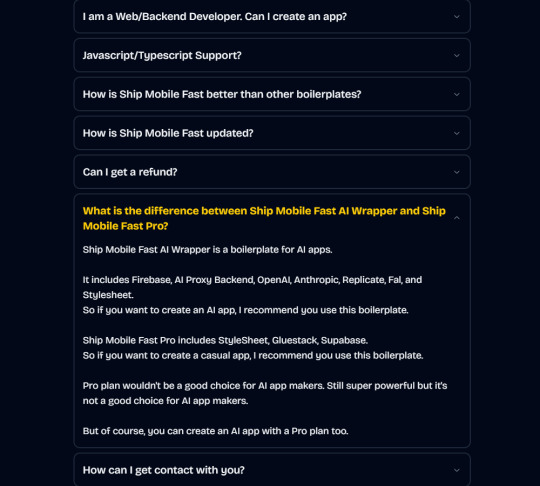
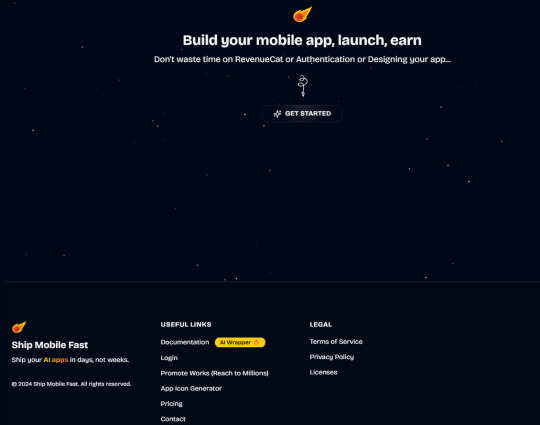
#ai#app#ship#mobile#fast#openai#claude#deepseek#proxy#api#admob#ads#firebase#supabase#falai#backend#ui#ux#replicate#revenuecat#google#expo#boilerplate#template#wrapper
2 notes
·
View notes
Text
Education_Developer Project Lifecycle
I see a lot of people here on codeblr want to start some project but, not really know the best way to get started. To rectify this, hear is my very in depth guide on how to get started. Read this entire post (some of these are started early but its milestone is later).
Note, I highly suggest the use of Github and will be referencing some things that are specific to it (like Wikipedia pages). If you prefer some other method that's fine just be aware you may be making your life harder than it needs to be.
Milestone 1: Form Teams
Find your people, exchange contact information and determine a time to meet up, consistently. If you are working solo, ignore some of the instructions for this section. That is not to say ignore the parts about consistency and time management. In fact, because you are working solo that should be even more important.
At the first meeting establish chat service (teams, slack, google chat, discord). Establish the frequency of the meetings and how often everyone should check their messages (ex: every 24 hours). Discuss the options about the project.
Platform: Android, django, iOS, react native, etc.
IDE: Xcode, WebStorm, VSCode, etc. Note that modern IDEs now have built-in methods for sharing your editor view with teammates: code together, code with me, etc.
Backend: firebase, postgresql, not needed, etc.
Libraries
APIs you will access
Package manager: npm, yarn, gradle, etc.
Finally, discuss the roles you all want on the team, what should one person focus on, who is the manager, editor, client rep, tester, researcher, repo master, master of specific tech, analyst etc.
Deliverables:
Add a wiki page (or more) to your repo titled "Team Organization" and list there the decisions you made from above, along with any pother pertinent information for the team.
Add a page to your wiki titled "Project Description" which should be kept updated as you make decisions about your project. It should contain these sections:
Description: a short description of your project,
Technologies: a list of the technologies you plan to use: frameworks, libraries, hosting services, etc.
Client: your client's name and contact info, if you have one, otherwise just say "Startup."
Milestone 2: Personas and User Stories
If you have a client who wants you to build the app, or you have identified a group of users for your app, then try to meet with them. Ask them what they do? (that is relevant to why they will use the app), why they want the app? how do they currently do the things they want the app to do? etc. If this is a startup answer those questions and more.
The point of this section is to better understand the users of this website. You need to make personas and user stories and record them so that you can reference them as you complete this project. It is very easy to loose sight of who will be using your product and assume they know more than they actually do.
Deliverables:
Add at least three personas to your wiki. These should cover 3 distinct user-types for your app. Each Persona must have a name, photo, and personal history.
Add a "User Stories" wiki page with at least 9 user stories covering the most common use cases for your app. They should all be of the form: As <the name of one of your personas> I want a <feature> so that I can <satisfy a need>.
Milestone 3: Design
For those that are more artsy than everyone else, now is your time to shine. Use a tool like Pencil, figma, justinmind, balsamiq, mockflow.com to design your product.
Your design should include:
An image for each of the major screens and dialogs of your app. Show all the widgets in their proper placement. Name each screen and write some text to explain how actions in one screen will lead to other screens.
In the case of a widget-free apps, you should include diagrams for all the major 'areas', animation stills that detail the most common animations and game mechanics (for example, Super Mario would have a set of drawings showing Mario jumping, punching up, and landing on a Goomba's head), as well as story boards if they are more relevant to your game.
A goal of the design is for you to think about the usability of your app. Try to 'use' the app in your mind: simulate how a user might use the app. Printing the screens into sheets of paper of the correct size and shuffling them as you pretend to use the app is a very common way to test the usability.
Another goal is to save you time. Remember that making a change now, like adding or deleting a screen, is a thousand times easier than if you wait until after you have written the code.
Deliverable: Add one page to your wiki called "Design" and add the images of your design here, along with some textual description of each screen and what it is used for.
Milestone 4: Requirements
This will be the main requirements document for your project. If you were charging a client for your work, this document would form part of that contract, specifying exactly what features your software will implement. The other part of the contract would be the payment details.
The document includes the design you made before (so, embed or add links to those images) but extends on that with detailed descriptions of all the desired features.
You will also mark each feature with one of:
Required: Core functionality of the app. Must have these for it to even start working.
Desired: Added functionality, usability, features, cosmetic features.
Aspirational: Other cool stuff you would like to add
Remember: all good programmers should understate what can be done and then over deliver. If you think something is going to take you 4 weeks, tell the client it will take 8. Then, when it inevitably takes you 6 weeks, you will seem ahead of schedule. On a similar note, if the client is asking for a lot of shit, say no. Now is not the time to be a people pleaser. If you want to please them, do it as a surprise addition, after basic functionality has been achieved.
Roughly the required features are those that need to get done first before anything else can even get started: things like logins, navigation menu, connection to backend, etc. They lay the foundation for building the app. An app that only implements the required features will at most get a passing grade in the class: 70.
The desired features are what make your app worth using. They make the app functional, attractive, and easy to use. Roughly, an app that implements all the desired features gets a 90 in the class.
The aspirational features make your app a professional-quality app. Implementing some of these moves it towards 100.
Deliverables:
Make a Requirements wiki page and list your requirements there.
Each item should succinctly explain a feature.
Each one will have a number. You can add sub-numbering, 1.1, 1.2, 1.2.1, etc. if you want.
Each one will be marked as either: Required, Desired, or Aspirational.
Add all the Proof of Concept Issues to your GitHub Issues with label:enhancement, milestone:Proof Of Concept. These are what you will implement first.
Milestone 5: Research
As a developer, you need to be intimately familiar with the technologies you are or could be using. You need to understand the pros, cons, and requirements of each library and platform that is relevant to your project. Thus, you need to be up to date on technology and, since technology seems to be always changing, this will be something you need to do throughout your career.
Specifically, you need to
Know about the various platforms available to you: their options and limitations.
Know about the various libraries that you can use to make your work easier.
Download, install, and build sample 'Hello world' apps using the most promising technologies. It is not enough to just read about it, you have to do it in order to learn.
Learn how to use the specific framework+libraries you choose to use for the project by building little apps with them.
Learn to use your package manager.
All of the above needs to be done before you start coding together with your team. Do not assume your teammates will teach you. You are responsible for learning.
This milestone will take a lot of time and work, which is why you should start working on this milestone as soon as that first meeting occurs where you discussion options.
Deliverable: Create a separate repo (I suggest naming it research-<projectname>) where you will place your sample project built using your team's chosen framework. The project will be more than just "hello world", or cut-n-paste from a tutorial. Start with tutorial code but, add you own code to their code. The app should have some minimal interactivity: user enters some data, program does something with it and shows the user.
Milestone 6: Architecture
Now that you are comfortable working with your chosen framework, you will write a document that roughly describes the big parts of your code. The structure will depend a lot on your chosen framework.
If you are building a webapp then you will probably list the set of database tables (models, for example: rails:ActiveRecords, meteor:Collections, etc), the set Views, and the set of Controllers. For webapps you should also list the of your URLs app, and what lives at each one.
If you are building an Android app then you will list your Activities or Fragments, along with their corresponding Views, as well as your model Java classes. You will also list your database tables (firebase, sqlite, localStorage, etc) if you need persistence, which almost everyone does.
Think deeply about your design. Go over the most common use-cases and check how those will be accomplished in code: which methods will be invoked? do the methods have references to all the objects they need in order to perform their job? Remember that your main goal is *de-coupling** the various classes: the fewer references (method arguments, global variables) they need, the easier your life will be.
Deliverable: Add architecture document to the wiki containing:
List all the languages/frameworks/libraries/services/APIs you plan to use. Explain how they will tie together. For example: This will be a native Android app written in Kotlin, using the android.graphics library, using firebase real-time database for cloud data, and firebase authentication for user accounts.
What package/build manager will you use? npm, gradle, yarn, flutter, pipenv, etc.
List what each person will work on. Everyone must make significant code contributions, or they will fail the class, see Syllabus.
Make sure all the images (if any) are embedded in the wiki page and hosted at GitHub.
Make sure the wiki page is easy to read.
If you are building a webapp:
Deployment How will you deploy? Which hosting provider(s)? Automation? Scripts? Explain.
Are you using Virtual Machines (vmware, vbox, etc) or Containers (docker) for development or deployment? Explain.
Is it a SPA or traditional? or mix? Explain. (My web application development lectures explain the difference.)
List of URLs you will implement. Explain any search arguments in English. Link (actual hyperlink) each URL to the page it shows in your Detailed Design milestone.
If implementing a REST API, document it. List all methods, parameters, and give English description of what they do.
The Views of your app. Embed the images from your Design Milestone. Typically, a webpage includes multiple views. For example, this webpage has a Header, Menu, and Content views (at least).
The Database schema: set of tables/documents with list of attributes and their types. Describe each table and attribute in English.
List of common queries you expect will be needed. Do any of then need to join tables?
If you are building a mobile or desktop app:
Release: How will you create and deliver a binary to testers? Explain. Note that the testers include us (the teachers of this class, when we grade your app). You must deliver a simple to install app: double-click to install.
Are you using Virtual Machines (vmware, vbox, etc) or Containers (docker) for development? If so, explain.
The Models for your app. These could be UML class diagrams, or just models with attributes (with type) and descriptions (in English).
How will your app maintain state? in memory? or database? or both? Note this in your Model Classes.
If you are using a db-backend (say firebase) then include the Database schema: set of tables/documents with list of attributes and their types.
List of common queries you expect will be needed. Do any of then need to join tables?
The Views of your app: name, describe. Embed the images from your Design Milestone. Typically, one page in the app is composed of multiple View elements.
Below will be complete as I do for my Capstone project.
Source Control
Ethical, Legal, and Security Considerations
Proof of Concept (PoC)
PoC Demo
Testing
Beta Release
RC1 Release
Quality Assurance
Website
1.0 Release
Final Demo Video
#erozcodes#studyblr#codeblr#education#self study#production cycle#scrum#devlifecycle#this shit can be so painful and I hope this can help
3 notes
·
View notes
Text
The Ultimate Guide to Web Development
In today’s digital age, having a strong online presence is crucial for individuals and businesses alike. Whether you’re a seasoned developer or a newcomer to the world of coding, mastering the art of web development opens up a world of opportunities. In this comprehensive guide, we’ll delve into the intricate world of web development, exploring the fundamental concepts, tools, and techniques needed to thrive in this dynamic field. Join us on this journey as we unlock the secrets to creating stunning websites and robust web applications.
Understanding the Foundations
At the core of every successful website lies a solid foundation built upon key principles and technologies. The Ultimate Guide to Web Development begins with an exploration of HTML, CSS, and JavaScript — the building blocks of the web. HTML provides the structure, CSS adds style and aesthetics, while JavaScript injects interactivity and functionality. Together, these three languages form the backbone of web development, empowering developers to craft captivating user experiences.
Collaborating with a Software Development Company in USA
For businesses looking to build robust web applications or enhance their online presence, collaborating with a Software Development Company in USA can be invaluable. These companies offer expertise in a wide range of technologies and services, from custom software development to web design and digital marketing. By partnering with a reputable company, businesses can access the skills and resources needed to bring their vision to life and stay ahead of the competition in today’s digital landscape.
Exploring the Frontend
Once you’ve grasped the basics, it’s time to delve deeper into the frontend realm. From responsive design to user interface (UI) development, there’s no shortage of skills to master. CSS frameworks like Bootstrap and Tailwind CSS streamline the design process, allowing developers to create visually stunning layouts with ease. Meanwhile, JavaScript libraries such as React, Angular, and Vue.js empower developers to build dynamic and interactive frontend experiences.
Embracing Backend Technologies
While the frontend handles the visual aspect of a website, the backend powers its functionality behind the scenes. In this section of The Ultimate Guide to Web Development, we explore the world of server-side programming and database management. Popular backend languages like Python, Node.js, and Ruby on Rails enable developers to create robust server-side applications, while databases such as MySQL, MongoDB, and PostgreSQL store and retrieve data efficiently.
Mastering Full-Stack Development
With a solid understanding of both frontend and backend technologies, aspiring developers can embark on the journey of full-stack development as a Software Development company in USA. Combining the best of both worlds, full-stack developers possess the skills to build end-to-end web solutions from scratch. Whether it’s creating RESTful APIs, integrating third-party services, or optimizing performance, mastering full-stack development opens doors to endless possibilities in the digital landscape.
Optimizing for Performance and Accessibility
In today’s fast-paced world, users expect websites to load quickly and perform seamlessly across all devices. As such, optimizing performance and ensuring accessibility are paramount considerations for web developers. From minimizing file sizes and leveraging caching techniques to adhering to web accessibility standards such as WCAG (Web Content Accessibility Guidelines), every aspect of development plays a crucial role in delivering an exceptional user experience.
Staying Ahead with Emerging Technologies
The field of web development is constantly evolving, with new technologies and trends emerging at a rapid pace. In this ever-changing landscape, staying ahead of the curve is essential for success. Whether it’s adopting progressive web app (PWA) technologies, harnessing the power of machine learning and artificial intelligence, or embracing the latest frontend frameworks, keeping abreast of emerging technologies is key to maintaining a competitive edge.
Collaborating with a Software Development Company in USA
For businesses looking to elevate their online presence, partnering with a reputable software development company in USA can be a game-changer. With a wealth of experience and expertise, these companies offer tailored solutions to meet the unique needs of their clients. Whether it’s custom web development, e-commerce solutions, or enterprise-grade applications, collaborating with a trusted partner ensures seamless execution and unparalleled results.
Conclusion: Unlocking the Potential of Web Development
As we conclude our journey through The Ultimate Guide to Web Development, it’s clear that mastering the art of web development is more than just writing code — it’s about creating experiences that captivate and inspire. Whether you’re a novice coder or a seasoned veteran, the world of web development offers endless opportunities for growth and innovation. By understanding the fundamental principles, embracing emerging technologies, and collaborating with industry experts, you can unlock the full potential of web development and shape the digital landscape for years to come.
2 notes
·
View notes
Text
Navigating the Full Stack: A Holistic Approach to Web Development Mastery
Introduction: In the ever-evolving world of web development, full stack developers are the architects behind the seamless integration of frontend and backend technologies. Excelling in both realms is essential for creating dynamic, user-centric web applications. In this comprehensive exploration, we'll embark on a journey through the multifaceted landscape of full stack development, uncovering the intricacies of crafting compelling user interfaces and managing robust backend systems.

Frontend Development: Crafting Engaging User Experiences
1. Markup and Styling Mastery:
HTML (Hypertext Markup Language): Serves as the foundation for structuring web content, providing the framework for user interaction.
CSS (Cascading Style Sheets): Dictates the visual presentation of HTML elements, enhancing the aesthetic appeal and usability of web interfaces.
2. Dynamic Scripting Languages:
JavaScript: Empowers frontend developers to add interactivity and responsiveness to web applications, facilitating seamless user experiences.
Frontend Frameworks and Libraries: Harness the power of frameworks like React, Angular, or Vue.js to streamline development and enhance code maintainability.
3. Responsive Design Principles:
Ensure web applications are accessible and user-friendly across various devices and screen sizes.
Implement responsive design techniques to adapt layout and content dynamically, optimizing user experiences for all users.
4. User-Centric Design Practices:
Employ UX design methodologies to create intuitive interfaces that prioritize user needs and preferences.
Conduct usability testing and gather feedback to refine interface designs and enhance overall user satisfaction.

Backend Development: Managing Data and Logic
1. Server-side Proficiency:
Backend Programming Languages: Utilize languages like Node.js, Python, Ruby, or Java to implement server-side logic and handle client requests.
Server Frameworks and Tools: Leverage frameworks such as Express.js, Django, or Ruby on Rails to expedite backend development and ensure scalability.
2. Effective Database Management:
Relational and Non-relational Databases: Employ databases like MySQL, PostgreSQL, MongoDB, or Firebase to store and manage structured and unstructured data efficiently.
API Development: Design and implement RESTful or GraphQL APIs to facilitate communication between the frontend and backend components of web applications.
3. Security and Performance Optimization:
Implement robust security measures to safeguard user data and protect against common vulnerabilities.
Optimize backend performance through techniques such as caching, query optimization, and load balancing, ensuring optimal application responsiveness.
Full Stack Development: Harmonizing Frontend and Backend
1. Seamless Integration of Technologies:
Cultivate expertise in both frontend and backend technologies to facilitate seamless communication and collaboration across the development stack.
Bridge the gap between user interface design and backend functionality to deliver cohesive and impactful web experiences.
2. Agile Project Management and Collaboration:
Collaborate effectively with cross-functional teams, including designers, product managers, and fellow developers, to plan, execute, and deploy web projects.
Utilize agile methodologies and version control systems like Git to streamline collaboration and track project progress efficiently.
3. Lifelong Learning and Adaptation:
Embrace a growth mindset and prioritize continuous learning to stay abreast of emerging technologies and industry best practices.
Engage with online communities, attend workshops, and pursue ongoing education opportunities to expand skill sets and remain competitive in the evolving field of web development.
Conclusion: Mastering full stack development requires a multifaceted skill set encompassing frontend design principles, backend architecture, and effective collaboration. By embracing a holistic approach to web development, full stack developers can craft immersive user experiences, optimize backend functionality, and navigate the complexities of modern web development with confidence and proficiency.
#full stack developer#education#information#full stack web development#front end development#frameworks#web development#backend#full stack developer course#technology
2 notes
·
View notes
Text
Become a Full-Stack Web Developer with just ONE course. HTML, CSS, Javascript, Node, React, MongoDB, Web3 and DApps
Ce que vous apprendrez
Build 16 web development projects for your portfolio, ready to apply for junior developer jobs.
Learn the latest technologies, including Javascript, React, Node and even Web3 development.
After the course you will be able to build ANY website you want.
Build fully-fledged websites and web apps for your startup or business.
Work as a freelance web developer.
Master frontend development with React
Master backend development with Node
Learn professional developer best practices.
Ce cours comprend :
Vidéo à la demande de 65,5 heures
7 exercices de codage
71 articles
102 ressources téléchargeables
1 note
·
View note
Text
The Future of Web Development: Trends and Strategies for 2024
Introduction
In today’s digital age, web development is more crucial than ever. Businesses like City Insider Inc rely on cutting-edge websites to engage users, drive sales, and establish a strong online presence. With rapid advancements in technology, staying updated on the latest trends in web development is essential for creating fast, secure, and user-friendly websites. This article explores the top trends, tools, and best practices shaping the future of web development in 2024.
1. The Rise of AI and Machine Learning in Web Development
Artificial Intelligence (AI) and Machine Learning (ML) are revolutionizing web development. From chatbots that enhance customer service to personalized content recommendations, AI-powered tools are making websites smarter. Platforms like City Insider Inc can leverage AI to analyze user behavior, optimize SEO, and automate repetitive tasks. Tools such as TensorFlow.js and OpenAI integrations allow developers to build dynamic, intelligent web applications with ease.
2. Progressive Web Apps (PWAs) for Enhanced Performance
Progressive Web Apps (PWAs) combine the best of websites and mobile apps, offering offline functionality, push notifications, and fast loading speeds. For businesses like City Insider Inc, PWAs provide a seamless user experience across all devices. Companies like Twitter and Pinterest have already seen significant engagement boosts by adopting PWAs. With frameworks like React and Angular, developers can build high-performing PWAs that improve retention and conversions.
3. Voice Search Optimization and Voice-Activated Interfaces
With the growing popularity of smart speakers like Alexa and Google Home, voice search optimization is becoming a key focus in web development. Websites must now be structured to answer voice queries naturally. City Insider Inc can stay ahead by implementing schema markup and optimizing for long-tail keywords. Additionally, integrating voice-activated navigation into websites enhances accessibility and user experience, making it a must-have feature in 2024.
4. Motion UI and Interactive Design Elements
Engaging visuals and micro-interactions are dominating modern web development. Motion UI—such as animated buttons, scroll-triggered effects, and 3D graphics—creates immersive experiences. Tools like Framer Motion and GSAP help developers implement smooth animations without compromising performance. For City Insider Inc, incorporating interactive design elements can increase user engagement and reduce bounce rates.
5. Cybersecurity and Privacy-First Development
As cyber threats increase, prioritizing security in web development is non-negotiable. GDPR compliance, HTTPS encryption, and regular vulnerability assessments are essential. Businesses like City Insider Inc must ensure secure payment gateways and data protection measures to build trust with users. Frameworks like OWASP provide guidelines for developing hack-resistant websites, making security a top priority in 2024.
6. Serverless Architecture for Scalability
Serverless computing allows developers to build and deploy applications without managing servers, reducing costs and improving scalability. Platforms like AWS Lambda and Firebase enable City Insider Inc to handle traffic spikes efficiently. Serverless architecture also enhances performance by minimizing backend latency, making it ideal for dynamic web applications.
7. Low-Code and No-Code Development Platforms
Not everyone needs deep coding knowledge to build a website anymore. Low-code and no-code platforms like Webflow and Bubble empower businesses to create functional sites quickly. While professional web development still requires custom solutions, these tools allow City Insider Inc to prototype ideas and launch MVPs faster than ever before.
8. The Growing Importance of Core Web Vitals
Google’s Core Web Vitals (loading speed, interactivity, and visual stability) directly impact SEO rankings. Optimizing these metrics ensures a smooth user experience. City Insider Inc can leverage tools like Lighthouse and PageSpeed Insights to audit and enhance website performance. Faster load times and responsive designs lead to higher conversions and better search visibility.
Conclusion
The future of web development is dynamic, driven by AI, PWAs, voice search, and enhanced security. For businesses like City Insider Inc, adopting these trends ensures a competitive edge in the digital landscape. By focusing on user experience, performance, and innovation, companies can build websites that captivate audiences and drive growth in 2024 and beyond.
Stay ahead with cutting-edge web development strategies—partner with experts to transform your online presence today!
0 notes
Text
Best Software Development Company in India for Robust Backend Systems and Scalable Applications: Wish Geeks Techserve

In today’s digital-first world, businesses need robust, scalable, and secure software solutions to stay ahead. Whether it's a custom-built platform or a complex enterprise application, the right software partner can make all the difference. Wish Geeks Techserve is recognized as the Best Software Development Company in India, delivering cutting-edge backend systems and scalable applications that power modern businesses.
Why Choose Wish Geeks Techserve for Software Development?
Wish Geeks Techserve offers a full spectrum of Software Development Services in India, providing end-to-end development, support, and consulting solutions. We help startups, SMEs, and enterprises bring their digital ideas to life through well-engineered and future-ready applications.
With a client-centric approach, agile methodology, and a strong focus on technology, we specialize in building platforms that are not only high-performing but also aligned with long-term business goals.
Our Core Software Development Services
Wish Geeks Techserve is more than just a tech team—we're your strategic digital partner. Our services include:
Custom Software Development: Tailor-made software to meet your exact business needs—built from scratch for maximum precision and control.
Backend System Development: Scalable, secure, and reliable server-side solutions that ensure your applications run smoothly under any load.
Mobile & Web App Development: Feature-rich applications optimized for performance across Android, iOS, and web platforms.
Software Maintenance and Support Services: Ongoing maintenance, upgrades, and troubleshooting to ensure your software stays secure, updated, and functional.
Software Consulting Services: Strategic insights and architecture planning to help you make the right technology decisions from day one.
Enterprise Application Development: End-to-end business process automation and integration through powerful enterprise-level software systems.
Key Technologies and Tools We Use
At Wish Geeks Techserve, we leverage the latest tools and frameworks to ensure high-quality development:
Backend: Node.js, Python, PHP, .NET, Java
Frontend: React, Angular, Vue.js
Mobile: Flutter, React Native, Kotlin, Swift
Database: MySQL, MongoDB, PostgreSQL, Oracle
Cloud & DevOps: AWS, Azure, Docker, Kubernetes
CMS & eCommerce: WordPress, Magento, Shopify
Industries We Serve
Wish Geeks Techserve has delivered powerful software solutions across a wide array of industries, including:
E-commerce
Healthcare
EdTech
Logistics
FinTech
Manufacturing
Travel & Hospitality
Real Estate
What Sets Wish Geeks Techserve Apart?
Business-Centric Development: We focus on outcomes that matter to your business—productivity, revenue, and user engagement.
Scalable Architecture: We future-proof your application with scalable infrastructure that grows with your business.
Agile Process: Our agile methodology ensures transparency, collaboration, and flexibility throughout the development cycle.
Experienced Team: Our skilled developers, UI/UX designers, QA engineers, and project managers bring years of domain knowledge and tech expertise.
End-to-End Solutions: From ideation to deployment and support, we handle every aspect of the development lifecycle.
Client Success Stories
We’ve helped businesses across India and abroad streamline their operations, reach wider audiences, and boost revenue through smart software systems. From custom CRM platforms to scalable SaaS products, our portfolio is proof of our commitment to innovation and quality.
Ready to Build Something Great?
Choosing the right software development company is crucial. At Wish Geeks Techserve, we bring your vision to life with solutions that are robust, user-friendly, and built to perform. Whether you’re launching a new product or upgrading an existing system, we’re here to help you scale, optimize, and succeed.
#software development services in India#software development company in India#software maintenance and support services#software consulting company India#custom software development agency India
0 notes
Text
How Back Office BPO Services Help in Business Growth & Revenue Generation
In the current competitive business environment, businesses continuously look for efficiency improvements, cost-cutting measures for operations, and a core competency focus. One of the strategies that has always been effective is utilizing Back Office BPO (Business Process Outsourcing) services. The services not only streamline the internal procedures but also contribute importantly to increasing business expansion and revenue generation.
This article delves into what back office BPO is, the advantages it presents, and how it lends its hand to a company's financial success.
What is Back Office BPO? Back office BPO is outsourcing internal, non-customer-facing operations to third-party service providers. These operations are crucial for a business to operate efficiently, albeit not directly handling customers.
Typical Back Office BPO Services Include: Data entry and data management
-Accounting and bookkeeping -Human resources and payroll -Inventory and order processing -IT support and system management -Compliance and legal documentation
These tasks, although not directly revenue-generating themselves, are essential for daily operations.
Why Companies Opt for Back Office BPO The need for back office outsourcing is on the rise, and it's easy to see why. Companies—particularly start-ups, SMEs, and large corporations—see the sense in outsourcing operational tasks to expert partners. Here's why:
Cost Savings One of the largest benefits of back office BPO is in terms of cost savings. Recruitment, training, and retention of back-end teams can prove to be costly. Outsourcing enables companies to lower labor costs, investments in infrastructure, and operational overhead
Scalability It is easier for firms to scale operations up or down due to outsourcing. When business is peaking or during growth periods, back office units can scale up quickly without burdening the firm's internal resources.
Focus on Core Business By outsourcing mundane or non-core processes, the internal teams can concentrate on core functions such as product development, marketing, and customer interaction, resulting in overall business expansion.
Enhanced Turnaround Time 24/7 operation is common among specialized back office BPO providers, minimizing processing time for essential operations such as data updates, payroll, or inventory management. Improved turnaround equals improved service and decision-making.
How Back Office BPO Drives Business Growth Let's move a step further in understanding how precisely back office outsourcing helps in business growth and optimization.
✅ Efficient Processes Best practices, automation software, and strong SOPs are used by back office service providers to finish the work accurately and efficiently. This decreases operational hurdles and enhances productivity.
✅ Greater Operational Agility With the assistance of BPO, companies can react more quickly to changes in the marketplace, customer requirements, and emerging opportunities. Rapid adaptation results in a competitive edge and business resilience.
✅ Optimal Use of Resources By releasing internal employees from lengthy administrative tasks, firms can divert resources to innovation, customer service, and growth activities.
✅ Global Access Many back office BPO providers operate across geographies. This gives businesses access to global talent and time zone advantages, making them operational around the clock.
Revenue Generation Through Back Office BPO Although back office operations are traditionally seen as cost centers, they can become indirect revenue generators when managed effectively. Here’s how:
1. Enhancing Customer Experience Effective data management, prompt billing, and optimized HR functions indirectly influence the customer experience. Satisfied customers translate into repeat business and more revenue.
2. Facilitating Quicker Market Entry With BPOs taking care of backend processes, companies can quickly establish presence in new markets without setting up from-scratch teams—boosting revenue potential.
3. Data-Driven Decision Making BPOs offer real-time analysis and metrics, enabling companies to make more intelligent decisions that enhance profitability and efficiency.
4. Automation & Innovation Contemporary BPO companies usually combine AI, RPA (Robotic Process Automation), and cloud utilities to automate routine processes—cutting costs and enhancing output and margins.
Industries That Gain from Back Office BPO Back office BPO is not specific to any industry. These are some of the industries that gain the most:
E-commerce – Order processing, returns handling, and stock monitoring
Healthcare – Medical billing, data entry, and insurance claim processing
Finance & Banking – KYC, compliance, document verification, and account management
Logistics – Tracking, documentation, and fleet scheduling
IT Services – Help desk, data processing, and backend support
Challenges & Considerations Though the benefits are many, the businesses will also need to factor in:
Data security and compliance – Ensure strict security procedures are followed by the BPO partner.
Communication barriers – Select providers with efficient communication channels.
Quality control – Check for KPIs and SLAs on a regular basis to maintain standards of performance.
Vendor management – Set precise agreements and long-term collaboration strategies.
The Right Selection of Back Office BPO Partner To achieve maximum benefits and ROI from outsourcing, choose a partner who:
Possesses industry-specific experience
2. Provides tailored service packages
3. Employs contemporary tech solutions
4. Possesses good client references
5. Maintains strict compliance with relevant rules
Conclusion Back office BPO services are not merely a cost-saving measure—they are a strategic resource that powers business efficiency, scalability, and profitability. Non-core functions can be outsourced, and focus delivered to what really counts: innovation, growth, and customer success.
As markets become more dynamic and businesses face pressure to perform with leaner resources, leveraging back office BPO will become an essential growth enabler. Whether you’re a startup looking to scale or an enterprise aiming to streamline, the right BPO strategy can unlock new revenue channels and drive sustainable success. Read more-https://oragetechnologies.com/back-office-bpo/ Our other blog you might like!- Also read- Top 10 BPO Companies Helpful for Business Productivity in 2025
#Back Office BPO#BPO Services#Business Process Outsourcing#Outsourcing Benefits#Revenue through BPO#Operational Efficiency#Data Entry BPO#Cost-Saving Solutions
0 notes
Text
Becoming a Full Stack Developer: My Roadmap to Mastery
Embarking on my journey to become a full stack developer has been nothing short of a thrilling adventure. It's been filled with moments of incredible learning, personal growth, and a profound passion for creating digital solutions that truly make a difference. From the fascinating world of front-end design to the intricate workings of back-end development, let me take you through my personal roadmap to mastering the art of full stack development.

Defining Full Stack Development
At its core, I see a full stack developer as a tech-savvy magician who possesses the unique ability to bring both the user-facing magic of the front end and the powerful machinery of the backend to life. It's not merely about coding; it's about the art of crafting seamless user experiences while skillfully managing the complex infrastructure that makes it all possible.
Self-Assessment
Like any journey, mine began with self-awareness. I took a close look at my existing skills and knowledge. I uncovered my strengths to build upon and identified the areas where I needed improvement. This self-assessment became the bedrock upon which I constructed my roadmap, allowing me to set clear, focused goals for my full stack development journey.
Front-End Development Skills
Mastering front-end technologies proved to be a thrilling challenge. Moving from the foundational HTML and CSS, which provide structure and style to web pages, to delving into the captivating realm of JavaScript with its dynamic interactions, each step forward brought its own set of revelations and challenges. My journey was marked by moments of both frustration and triumph as I evolved from crafting basic layouts to creating intricate user interfaces that sprung to life at the simple click of a button.
Back-End Development Skills
Transitioning to the backend was like stepping into a whole new world of data management, server intricacies, and complex logic. Learning languages like Python, diving deep into databases like MySQL, and exploring frameworks such as Flask and Django became the building blocks of my backend journey. The sheer satisfaction of watching my code efficiently manage data and orchestrate complex operations fueled my determination to keep pushing forward.
Bridging the Gap
The leap from front-end to back-end wasn't a smooth one. Bridging this gap required not only the acquisition of new technical skills but also a shift in mindset. The challenges were numerous – learning to handle data securely, optimizing performance, and orchestrating intricate processes. I adopted various strategies to make this transition seamless, eventually allowing me to unite my front-end and back-end skills into a unified full stack approach.
Full Stack Development Frameworks
The full stack development world introduced me to a plethora of frameworks designed to streamline the entire process. Frameworks like MEAN (MongoDB, Express.js, Angular, Node.js) and MERN (MongoDB, Express.js, React, Node.js) became my trusted companions. They not only accelerated development but also offered valuable insights into the best practices of full stack architecture.
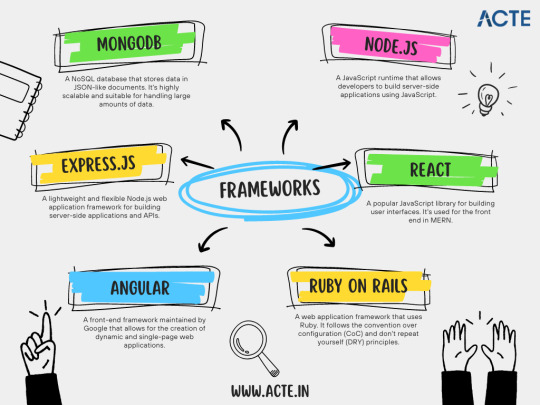
Building Projects
Knowledge truly gains momentum when it's put into practice. Building projects became an essential part of my journey. These projects provided the practical experience necessary to solidify my skills. Whether it was crafting dynamic e-commerce platforms or developing interactive web applications, each project served as a canvas for innovation, experimentation, and continuous improvement.
Continuous Learning
Full stack development is an ongoing journey without a defined finish line. The ever-evolving landscape continually demands learning and adaptation. To stay updated with emerging trends and technologies, I relied on online platforms, coding communities, and valuable resources like full stack developer course and blogs provided by ACTE.
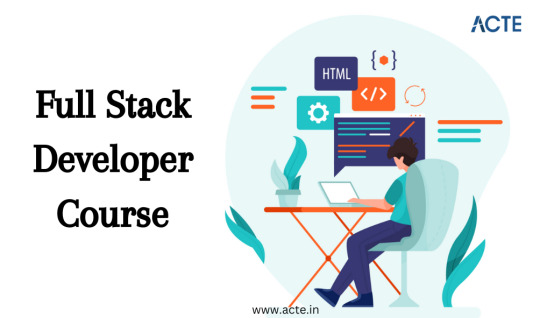
Challenges and Rewards
This journey had its fair share of difficulties, of course. Debugging cryptic errors, optimizing code for performance, and keeping pace with rapid technological advancements were just a few of the hurdles I encountered. However, the rewards far surpassed the struggles. The ability to transform ideas into functional applications, the satisfaction of solving intricate puzzles, and the sheer joy of witnessing my work in action were the driving forces that kept me moving forward.
Networking and Community
In today's digitally connected world, networking is an invaluable asset. Engaging with developer communities and attending meetups opened doors to fresh perspectives, exciting collaborations, and invaluable insights. The support and camaraderie of fellow developers served as a constant reminder that I wasn't alone on this journey.
Becoming a full stack developer is about more than just acquiring technical skills; it's a transformative journey of self-discovery, overcoming challenges, and embracing growth. To all those aspiring full stack developers out there, my advice is to wholeheartedly embrace each challenge as a learning opportunity. Your roadmap may take unexpected turns, but with dedication, resilience, and a deep passion for innovation, you too can navigate the path to mastery. The world of full stack development awaits – so go forth and code boldly!
6 notes
·
View notes
Text
Why Professional App Development Matters
In an era where mobile usage dominates, your app can be the first—and often only—interaction a user has with your brand. That’s why professional app development is more than just building a working product—it’s about creating an experience that is intuitive, reliable, scalable, and engaging.
At Aripro Designs, we specialize in developing mobile apps that don’t just work—they wow. Whether you’re launching a startup, growing an enterprise, or expanding your digital offerings, our professional app developers are here to make it happen.

What Makes Our App Developers “Professional”?
Being a “professional” app developer goes beyond technical skills. At Aripro Designs, it means delivering end-to-end solutions that are:
Strategic: We don’t just build what’s asked—we think ahead. We analyze your goals and recommend the best technologies, features, and user flows.
User-Centric: Our developers work hand-in-hand with UX/UI designers to ensure every app is intuitive, attractive, and friction-free.
Quality-Driven: Every app undergoes rigorous testing to ensure it performs flawlessly across devices and platforms.
Up-to-Date: We stay current with the latest frameworks, libraries, and OS updates so your app is future-ready.
Collaborative: You’re never left in the dark. We offer full transparency, frequent updates, and open communication at every step.
Our Full-Cycle App Development Services
Here’s how we turn your vision into a high-performing app:
1. Consultation & Discovery
We begin with in-depth discussions to understand your business, target users, and technical requirements. This stage ensures we build with purpose and clarity.
2. UI/UX Design
Our design team crafts user interfaces that are both functional and visually appealing. The goal? To create seamless user journeys that keep people engaged and returning.
3. App Development (Native & Cross-Platform)
We offer both native app development (Swift for iOS, Kotlin for Android) and cross-platform solutions (Flutter, React Native). You get performance, speed, and versatility based on what’s best for your app.
4. Backend Integration & API Development
We connect your app to secure, powerful backends with scalable architecture. Whether it’s cloud services, payment gateways, or custom APIs—we’ve got it covered.
5. Testing & QA
We conduct multiple testing phases—unit testing, functional testing, UI/UX testing, and real-user simulations—to catch bugs before your users do.
6. Deployment & Launch
We help you publish your app on the App Store, Google Play, or enterprise platforms, ensuring all compliance and guidelines are met.
7. Post-Launch Support & Maintenance
Apps need updates, performance tweaks, and sometimes emergency patches. We stay with you long after launch to ensure your app remains optimized.
Why Clients Trust Aripro Designs
Experienced Team: Skilled developers, creative designers, and strategic planners Client-Centric Focus: We adapt our process to your needs, not the other way around Cost-Efficient Packages: Quality development without breaking your budget Scalable Solutions: Built to grow as your business expands Real Results: Apps that enhance engagement, boost revenue, and simplify user interactions
Industries We Serve
We’ve built powerful apps for clients across diverse sectors, including:
E-commerce & Retail
Healthcare & Wellness
Education & eLearning
Logistics & Transportation
Finance & Fintech
Gaming & Entertainment
Let's Build Something Amazing Together
Your idea deserves more than a template-based app—it needs thoughtful execution, creative design, and bulletproof development. That’s what Aripro Designs delivers.
Schedule a free consultation with our expert app development team today. Let’s turn your app idea into a real success story.
0 notes
Text
Best Practices for API Integration in Next.js Apps
Modern web applications thrive on seamless, efficient, and secure API communication. Whether it's pulling data from a CMS, connecting with a payment gateway, or interacting with a cloud service, API integration is at the core of every high-performance Next.js app.
Next.js, with its server-side capabilities and built-in API routes, offers a flexible environment for creating and consuming APIs. But with flexibility comes the responsibility of integration best practices especially when dealing with sensitive data or mission-critical services.

Why Next.js Is Built for API-Driven Applications
Next.js offers both server-side and client-side rendering, making it ideal for hybrid API workflows. Developers can:
Use getServerSideProps() or getStaticProps() for SSR/SSG-based data fetching.
Utilize /api routes to implement backend logic directly within the app.
Take advantage of built-in middleware for authentication, error handling, and request filtering.
This architectural flexibility is why SaaS companies can scale frontend with Next.js, particularly when their APIs need to serve both dynamic dashboards and SEO-friendly landing pages.
Best Practices for Integrating APIs in Next.js
1. Centralize API Logic
Avoid scattering fetch calls across components. Instead, centralize them using a services directory or a custom hook (useApi) for consistency and maintainability.
2. Use Environment Variables
Secure API keys and sensitive data by using .env.local. Never hardcode tokens in the frontend codebase.
3. Handle Errors Gracefully
Build resilient error handling using try/catch blocks and conditionally render UI based on the state of the API response.
4. Use SWR or React Query
For client-side API calls, libraries like SWR (by Vercel) or React Query help manage caching, loading states, and automatic revalidation.
5. Secure Your APIs
Whether you're calling third-party APIs or building your own endpoints within the Next.js /api folder, security is critical. Learn how to ensure REST API security to prevent unauthorized access, data leaks, and common vulnerabilities like CSRF and XSS.
When Should You Hire an Expert?
As your application scales and API complexities increase especially with third-party integrations, real-time data, or sensitive business logic it’s beneficial to hire Next.js developers who are skilled in scalable architectures, secure integrations, and performance optimization.
Final Thoughts
APIs are the arteries of modern web apps. When combined with the server-side strengths of Next.js, your frontend becomes more powerful, reactive, and tailored to user needs. By following these best practices, you’re not only creating better experiences, you're building a scalable, secure, and resilient application foundation.
0 notes
Text
Why Choosing the Right MERN Stack Development Company Matters for Your Business
In today’s digital-first world, building high-performing, scalable, and responsive web applications is a must. To achieve this, businesses are increasingly turning to modern full-stack frameworks like MERN. But success with this stack doesn’t come just from using the technology—it comes from choosing the right MERN stack development company to bring your vision to life.
Brain Inventory stands out as a leading provider of MERN stack development services, helping businesses across industries develop cutting-edge digital products using MongoDB, Express.js, React, and Node.js. With an expert team, proven processes, and industry-specific insights, we empower you to go to market faster with web solutions that scale effortlessly.

What is the MERN Stack and Why Should You Use It?
The MERN stack is a powerful, JavaScript-based full-stack solution that combines
MongoDB—A flexible NoSQL database that stores JSON-style data.
Express.js—A lightweight backend framework built on Node.js.
React.js—A frontend library used to build interactive user interfaces.
Node.js—A high-performance JavaScript runtime for building scalable server-side applications.
At Brain Inventory, our MERN stack experts use this framework to create web applications that are seamless, scalable, and secure. Because the entire stack is JavaScript-based, development is faster, more efficient, and easier to maintain across all layers.
Why Brain Inventory Is the Best MERN Stack Development Company for Your Project
When you choose Brain Inventory as your MERN stack development partner, you gain more than just technical expertise—you gain a team that’s genuinely invested in your success.
🔹 End-to-End MERN Stack Development Services
We offer complete MERN stack development services, including planning, UI/UX, front-end development, back-end architecture, API integration, and cloud deployment.
🔹 Skilled & Dedicated Developers
Our dedicated MERN stack developers are highly trained in React, Node.js, and MongoDB. Whether you need an MVP or a full-scale enterprise platform, Brain Inventory ensures top-tier development from start to finish.
🔹 Agile Development with Real-Time Communication
At Brain Inventory, we follow agile workflows with sprints, iterations, and continuous feedback to keep your project on track. Our clients stay informed at every step.
🔹 Flexible Hiring Models
You can choose hourly, part-time, or full-time engagement models based on your project’s size and scope. Hire developers or full teams as needed���with complete transparency.
Benefits of Choosing MERN Stack for Your Web Development Needs
When you partner with Brain Inventory for MERN stack development services, you get:
✅ Unified JavaScript Development: Code reuse across client and server.
✅ Lightning-Fast Performance: Asynchronous Node.js and React’s virtual DOM.
✅ Component-Based Architecture: Reusable and scalable UI elements.
✅ Cloud-Ready: Built-in support for scalable deployment environments.
✅ Real-Time Capability: Ideal for live dashboards, chat apps, and more.
We leverage these strengths to build solutions that not only meet current requirements but also anticipate future growth.
Custom MERN Stack Development Services by Brain Inventory
As a full-service MERN stack development company, Brain Inventory offers:
🔹 Custom Web App Development
🔹 Real-Time Application Development
🔹 Enterprise-Grade Solutions
🔹 API Integration & Third-Party Services
🔹 Progressive Web App (PWA) Development
🔹 Ongoing Maintenance & Support
Whether you’re in fintech, healthcare, education, or eCommerce, our team tailors solutions that align with your industry and audience.
Industries That Rely on Brain Inventory’s MERN Stack Expertise
Brain Inventory has delivered powerful MERN-based solutions for clients in:
🏥 Healthcare (Patient Portals, EMRs)
🛒 E-Commerce (Custom Online Stores, Marketplaces)
🎓 EdTech (Learning Management Systems)
🏦 FinTech (Data Dashboards, Transaction Portals)
📊 SaaS Products (CRM, ERP, BI Tools)
Our developers combine domain knowledge with MERN stack excellence to craft applications that truly deliver value.
Conclusion: Let Brain Inventory Power Your Next Digital Product
The success of your digital product depends not just on technology, but on the team implementing it. As a top-rated MERN stack development company, Brain Inventory is your trusted technology partner. We’ve helped startups, SMEs, and enterprises launch scalable, secure, and intuitive applications using our proven MERN stack expertise.
If you're looking for dependable MERN stack development services with flexible engagement, transparent processes, and a skilled team—Brain Inventory is here to help.
Contact Brain Inventory today to discuss your project and unlock the full potential of MERN stack for your business success.
0 notes
Text
Best ReactJS Development Company in India
Webworx ReactJS API Integration services connect your app with powerful backends using REST or GraphQL for a data-driven strategy. Best ReactJS Development Company in India. We ensure secure, efficient data flow and error‑proof handling for smooth user experiences. From e‑commerce to SaaS, our services make your React front-end truly dynamic.

#ReactJSDevelopment#ReactExpertsIndia#APIIntegrationServices#SaaSDevelopmentIndia#BestReactCompany#WebDevelopmentIndia#DynamicWebApps#GraphQLIntegration#EcommerceDevelopment#FrontendDevelopmentIndia
0 notes